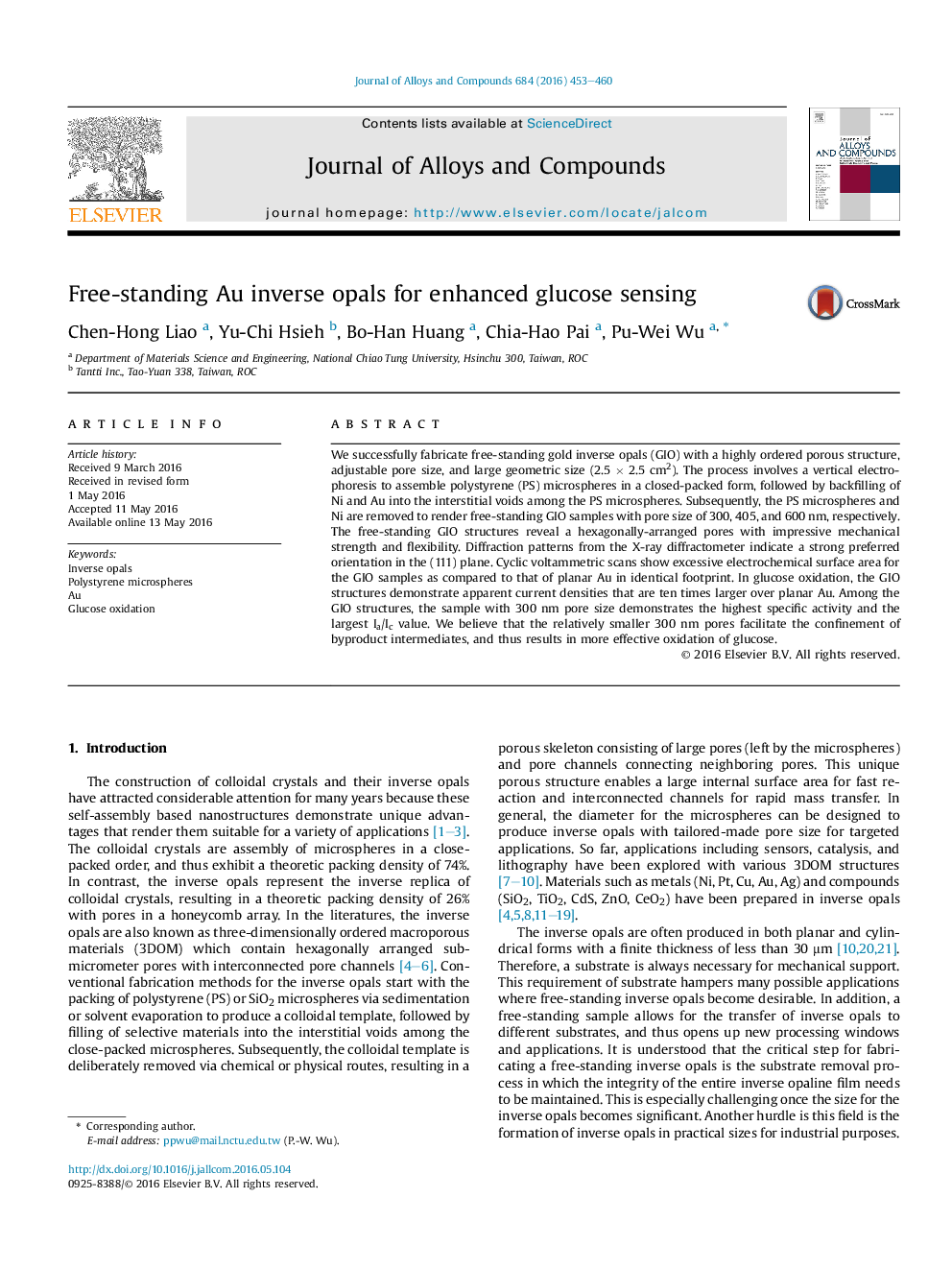| Article ID | Journal | Published Year | Pages | File Type |
|---|---|---|---|---|
| 1605270 | Journal of Alloys and Compounds | 2016 | 8 Pages |
Abstract
We successfully fabricate free-standing gold inverse opals (GIO) with a highly ordered porous structure, adjustable pore size, and large geometric size (2.5Â ÃÂ 2.5Â cm2). The process involves a vertical electrophoresis to assemble polystyrene (PS) microspheres in a closed-packed form, followed by backfilling of Ni and Au into the interstitial voids among the PS microspheres. Subsequently, the PS microspheres and Ni are removed to render free-standing GIO samples with pore size of 300, 405, and 600Â nm, respectively. The free-standing GIO structures reveal a hexagonally-arranged pores with impressive mechanical strength and flexibility. Diffraction patterns from the X-ray diffractometer indicate a strong preferred orientation in the (111) plane. Cyclic voltammetric scans show excessive electrochemical surface area for the GIO samples as compared to that of planar Au in identical footprint. In glucose oxidation, the GIO structures demonstrate apparent current densities that are ten times larger over planar Au. Among the GIO structures, the sample with 300Â nm pore size demonstrates the highest specific activity and the largest Ia/Ic value. We believe that the relatively smaller 300Â nm pores facilitate the confinement of byproduct intermediates, and thus results in more effective oxidation of glucose.
Related Topics
Physical Sciences and Engineering
Materials Science
Metals and Alloys
Authors
Chen-Hong Liao, Yu-Chi Hsieh, Bo-Han Huang, Chia-Hao Pai, Pu-Wei Wu,
